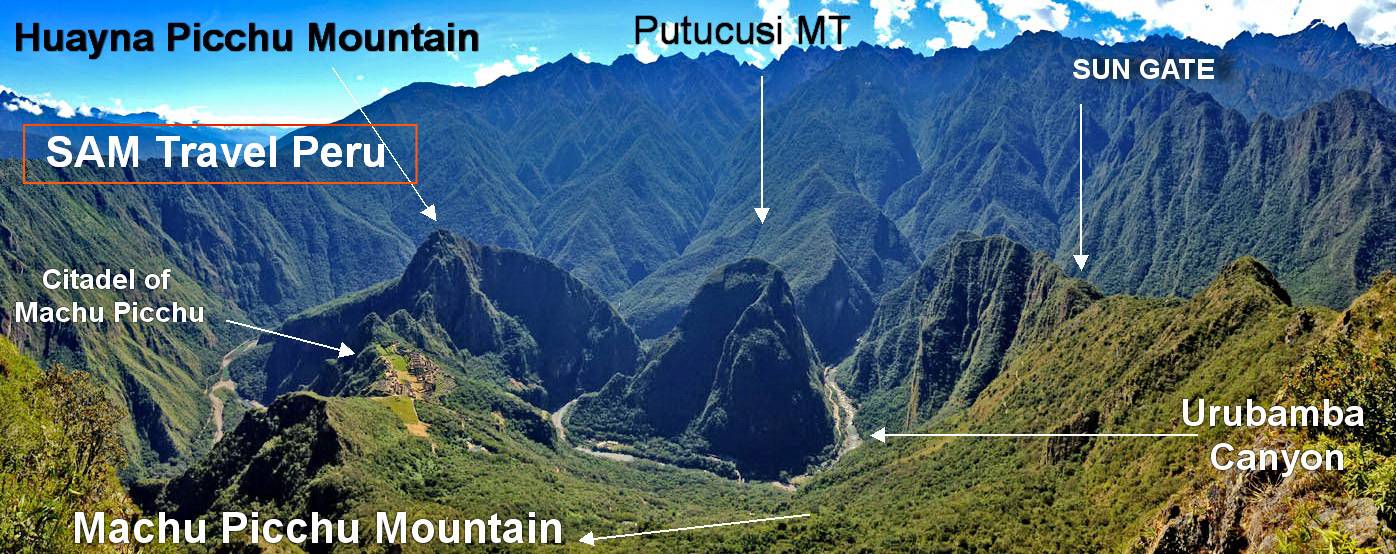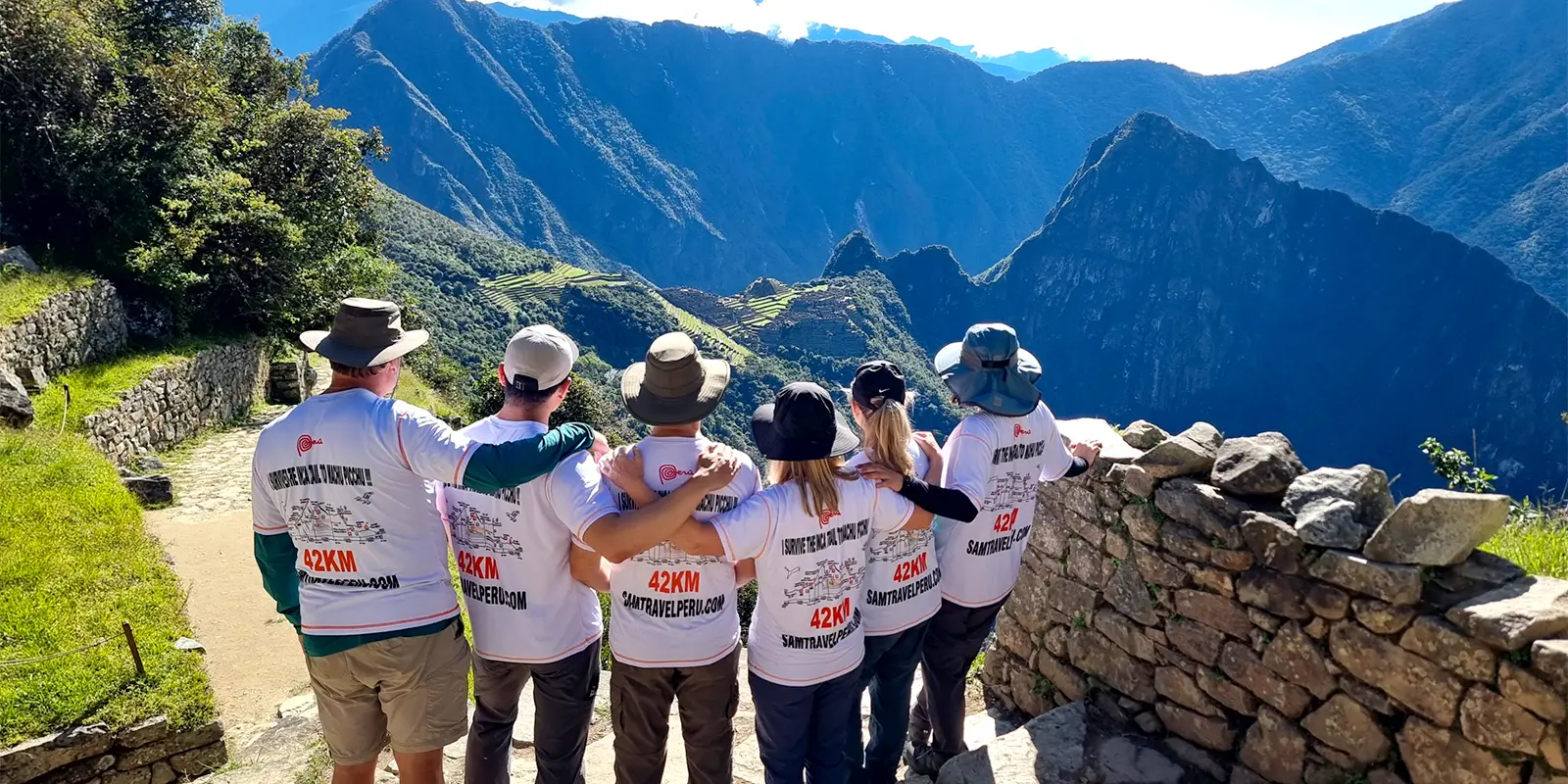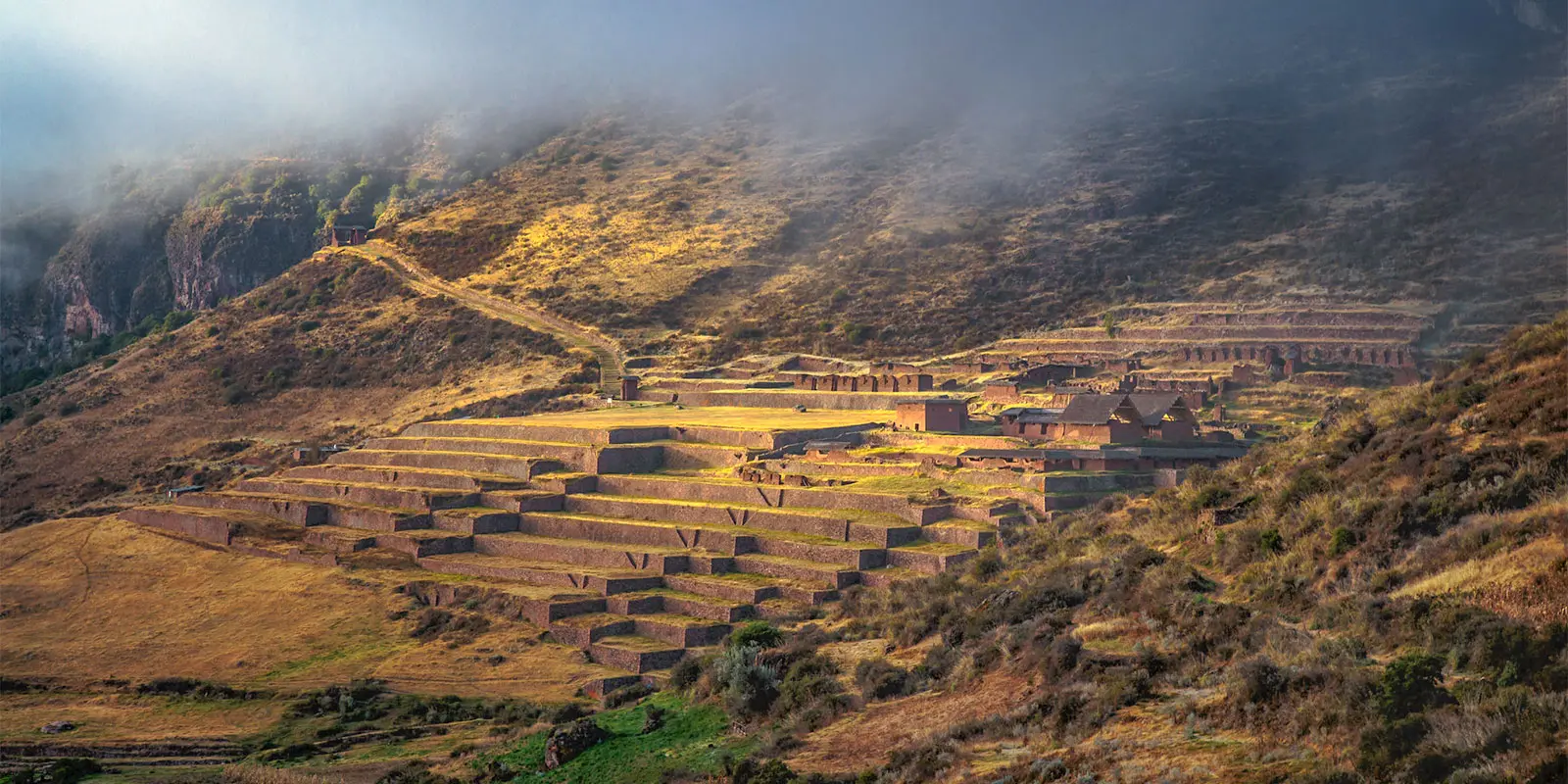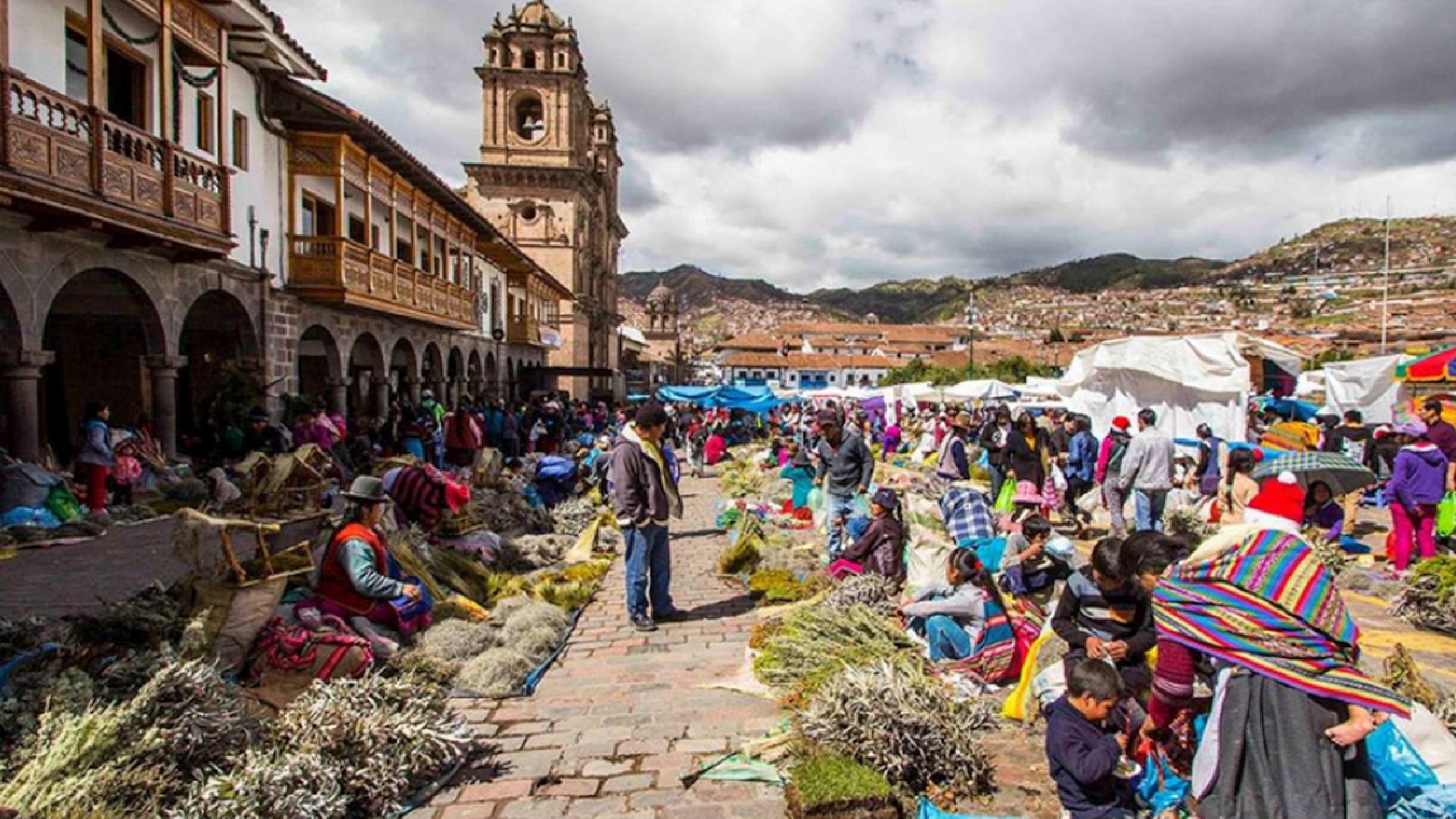Extra Hikes and Activities in Machu Picchu After the Tour

Enjoy the strategic location of the Inca Citadel of Machu Picchu and the surrounding lush canyon from the different angled view points such as: Huayna Picchu Mountain, Sun Gate, Machu Picchu Mountain (not to be confused with the citadel itself), Llactapata Inca ruins, Putukusi Mountain and the Inca bridge section.
Those who are doing the Inca Trail will see Machu Picchu for the first time from the Sun Gate, which is one of the highlights of why people choose the Inca Trail Trek. Those doing alternative treks arrive to Machu Picchu from Aguas Calientes. After the last day of your trek, you will stay a night in a hotel in Aguas Calientes and take the early bus the next morning to Machu Picchu to enjoy the sunrise. There are extra hikes to do to enjoy different vantage points.
Check each EXTRA HIKES DETAILS like Huayna Picchu Mountain.
HUAYNA PICCHU MOUNTAIN INFORMATION
Why does Huayna Picchu sell out faster? Well for starters, Huayna Picchu is home to the breathtaking Temple of the Moon. Huayna Picchu peak is the steeper climb in comparison to Machu Picchu Mountain. You’ll encounter long sets of stairs and very steep, narrow paths. You’ll need to keep your hands free as it gets trickier towards the top. Ladders and cables are provided to hold on. This hike is perfect for adrenaline seekers.
Along the climb, there are areas of great exposure to big drop offs and the top can feel very crowded. However, the great thing about Huayna Picchu is that when you’re at the peak, you are able to look straight down over the Machu Picchu ruins and the Urubamba River. It is a faster hike and you get the bonus of seeing some partially completed Inca buildings. The hike will take about 2 hours, roundtrip. Finally, please note that the trail can be very slippery when it’s wet or rainy.
ARE THE ENTRANCE TICKETS LIMITED?
Yes! They are limited to 400 hikers per day so you will need to plan early to book this extra hike. At least 2 to 3 months in advance. We will purchase the permit for you with your trek, if tickets are available.
Schedules for hiking up to Huayna Picchu:
- First schedule: 7am
- Second schedule: 8am
- Third Schedule: 9am
- Forth Schedule: 10am – This is the best schedule for Inca trail trekkers.
***These are the start times for the hike. It takes approximately 2 hours (roundtrip) to hike Huayna Picchu.
*** To hike the Huayna Picchu Mountain, you need to follow the circuit 4, with this ticket, however, you are not allowed to explore the rest of Machu Picchu Citadel.
****You must respect the entrance time of 7am, 8am, 9am or 10am; if you are 5 minutes late you will not be allowed to enter.
PRICES
- For trekkers of the Inca Trail to Machu Picchu: $75 USD per person
- Alternative treks to Machu Picchu: $75 USD per person
- Tours to Machu Picchu: $75 USD per person
MACHU PICCHU MOUNTAIN INFORMATION
The great Machu Picchu mountain rises more than 652m/2,139ft above the Sacred City of Machu Picchu and is located at 3,082m/10,111ft above sea level. It offers some breath taking views of Machu Picchu, a uniqueness like no other place in the world. It is seated at the base of the Inca Citadel of Machu Picchu. Thousands are drawn everyday, by the unique energy from the earth at Machu Picchu, which is considered sacred to the Inca civilization. Machu Picchu Mountain’s summit was used by Inca priests to perform rituals on special dates and is a place of worship of the Apu Salkantay.
Note: Due to the fact the government has changed the entrance times for this hike and they conflict with the standard tours time for Machu Picchu Citadel; to be able to hike this optional trek, you will need an extra day at Machu Picchu in order to have time to hike it.
***This is an optional trek within Machu Picchu that does not include a guide. The climb is usually done on your own after you tour of Machu Picchu.
HOW LONG DOES IT TAKE?
The amount of time to climb Machu Picchu mountain depends on the physical condition of the individual and can range from 1 to 1.5 hours to climb or 2 to 3 hours (round-trip). From the top, you have incredible views of Machu Picchu and the last part of the Classic Inca Trail. You can also admire the amazing canyon formed by the slope of the Vilcanota river with green mountains on one side and on the other side the mountains of the Cordillera Vilcabamba and the snowy summit of Salkantay (6,271 m/20,574ft) and more.
The climb to Machu Picchu Mountain is considered moderate to difficult but not challenging. An average physical condition is required. During the rainy season, the road can be very slippery, making the ascent more difficult.
Schedules for hiking up to Machu Picchu Mountain:
- First schedule: 7am
- Second schedule: 8am.
***This is the time you start the hike. It takes approximately 3 hours (roundtrip) to hike Machu Picchu Mountain.
*** To hike the Machu Picchu Mountain, you need to follow circuit 3. With this ticket, you are not allowed to explore the rest of Machu Picchu Citadel.
***You must always respect the scheduled entrance times of 7am or 8am. If you arrive 5 minutes late you will not be allowed to enter!
PRICES
- For trekkers of the Inca Trail to Machu Picchu: $75 USD per person
- Alternative treks to Machu Picchu: $75 USD per person
- Tours to Machu Picchu: $75 USD per person
INFORMATION ABOUT THE SUN GATE
With the new regulations, day visitors can now do the walk to the Sun Gate. You will now have to buy an extra ticket for the hike. The views are spectacular.
For travellers who trek the Inca Trail, they enter Machu Picchu through the Sun Gate, also called Inti Punku, and watch the sunrise.
INCA BRIDGE INFORMATION
The trail to the Inca Bridge wraps around the backside of a mountain in the opposite direction of the Machu Picchu ruins. A extra ticket needed to walk the path, although daily traffic to the Inca Bridge is documented. Each visitor must log their name in a book at the entrance and then sign out. It’s about a 20-minute hike along a fairly narrow path towards the bridge. While the climb isn’t steep, some of the drop-offs along the edges may make some people uneasy.
The Inca Bridge is made of a few narrow logs perched above a sheer vertical drop – it´s believed to have served as a secret entrance to Machu Picchu. Crossing the bridge itself is strictly forbidden today for safety reasons but you can take as many photos as you like. On the return hike, you’re likely to ponder whether or not you would have the courage to cross the bridge if you lived during the time of the Incas.
PUTUKUSI MOUNTAIN INFORMATION
When heading for Machu Picchu, climbers often want a bird’s eye view of the ruins and most head up to the summit of the famous Huayna Picchu. This mountain makes the backdrop for Machu Picchu. Wait! There’s another mountain just a little further away from the ruins. Visited less frequently, this mountain also gives the climber great views: Putukusi (also spelled Putucusi) lays directly across the Urubamba River from the ruins of Machu Picchu.
The summit has wide open views over Machu Picchu as well as the surrounding valleys and mountain peaks. It’s best to get there early (around 6:00 am) to see the ruins before the crowds enter Machu Picchu. Also, the light is best at that time of the day.
Aguas Calientes is a small village surrounded by rugged impenetrable mountains in the eastern part of Peru’s Oriental Cordillera . The entire town exists for one sole purpose: to serve the thousands of yearly visitors to Machu Picchu.
Right next to Aguas Calientes, even closer than Machu Picchu, Putukusi is a sheer cliff, a jungle coated mountain rising the better part of two thousand feet up from the valley. On a clear day, it’s possible to see Machu Picchu with snow-capped Salkantay behind it, which is an absolutely spectacular sight. Putukusi is the best and almost only thing to do in the Aguas Calientes area that doesn’t involve Machu Picchu and doesn’t require paying an entry fee.
The mountain, like all others in the area, is composed of near vertical, perfectly smooth stone walls with steep gullies intersecting them. The walls are entirely covered by cloud forest.
The trail leading up the mountain is more vertical than horizontal; that seems to be the general pattern among the mountains here. When looking out at Machu Picchu from the summit of Putukusi, it is interesting to ponder why the Incas chose to build their empire in such a rugged place. Surely the incredible beauty of the landscape inspired them and they thought of themselves as standing in the presence of their gods. The wilderness here is some of the most pristine left anywhere on earth. It is interesting to imagine that there might be another “Machu Picchu” hidden in these mountains that today nobody knows even exists.














